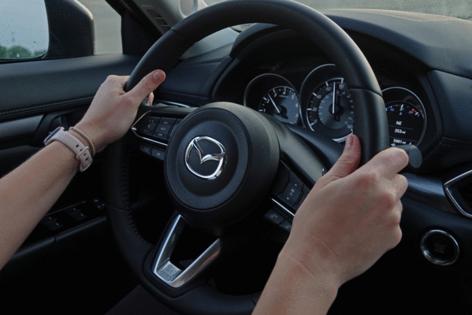Motormouth: Hands on the wheel
Published in Automotive News
Q: I see in a recent column you advocate holding a car steering wheel at the 3- and 9-o’clock position. As an older adult who took a driving safety class for an insurance discount, they advocate the 4- and 8-o’clock position. They said it gives optimal control and if you’re in an accident and your steering wheel airbag goes off, it’s less likely to break your thumbs. Any thoughts on that?
M.P., Lino Lakes, Minnesota
A: I maintain that 3 and 8 are better. You have more leverage to control the steering wheel including the option of pulling down or pushing up on the wheel. As for the thumbs, if you don’t loop them around the wheel, they should be fine.
Q: Reading your response to B.S. in Minneapolis, re: buying a PHEV. Your answer included adding a fuel stabilizer. My question: I am fortunate to have easy access to 100% pure gas (non-ethanol) and am wondering if that fuel degenerates at a faster or slower rate than 10% ethanol fuel and also if a fuel stabilizer would be effective for this type of fuel. It may be a placebo effect, but I feel like my vehicle runs smoother (especially cold startup) and I experience moderate improvement in fuel efficiency and fewer fuel system issues. Your thoughts please?
J.C., Darien, Illinois
A: All motor gasoline is a blend of hundreds of chemicals. Some, such as butane, vaporize rapidly, which is useful when starting the engine. Others are more stable and longer lasting. During long term storage, the more volatile compounds are lost, and oxidation occurs. Oxidation is the main culprit causing the gas to thicken and lose volatility -- all gasoline. Fuel stabilizers help control oxidation in both E10 and pure gas sans alcohol.
Q: We are considering helping a family member with their move by towing a 4-by-8 or a 5-by-8 cargo trailer (U-Haul) to their new home. The distance is approximately 1,300 miles. I have a 2017 Buick Enclave with front-wheel drive and 87,000 miles on the odometer. The car does not have a factory installed towing package. It has a 2-inch Class 3 hitch receiver, rated for a 5,000-pound gross trailer weight and a 500-pound tongue weight. We use the hitch to transport our two bicycles. Would driving the 1,300 miles with a trailer attached harm the engine or drivetrain? Are there any changes we should make to the car? Is there any advice you can give us?
R.W., State College, Pennsylvania
A: The standard 2017 Buick Enclave has a total maximum towing capacity of up to 2,000 pounds. Although your receiver may bear a 5,000-pound tongue weight, the vehicle’s spec is closer to 200 pounds. I’d say the payload capacity is 500 to 1,600. I advise you to call U-Haul and rent a truck.
Q: Awhile back, you printed my letter asking about the battery/power pack. I then got one, charged it and figured I would never use it. Recently, I tried to start my car at my sister's house. The battery was totally dead when I tried. I got out the battery pack, and my handy sister quickly hooked it up. I tried to start the car, and it immediately worked. As she said, "You paid for it with just one use." I told another single woman who lives alone about it, and she said she would order one that very day. So, I'm glad you mentioned it in your Sunday column from the concerned adult child with a senior mother in Wisconsin.
N.D., Chicago, Illinois
A: As your humble scribe, You’re welcome and I thank you,
Q: While stuck in stop-and-go traffic, staring at the back of the car ahead, I've come to notice that a lot of Asian and European cars have a single small, blank, removable plug in the rear bumper for no apparent reason. Usually it is square-shaped, offset to one side or the other, styled into the bumper to be as discreet and unobtrusive as possible. Occasionally there might be one on each side, and I have sometimes seen one in the front bumper as well. They're not parking sonar sensors. I don't see them on American cars as much, and my trusty old 2005 Corolla does not have any. What are they for?
A.G., McHenry, Illinois
A: Those on the rear are usually covering access to the spare tire support. Turning a crank lowers the cable holding the tire. Front bumper plugs often conceal a threaded hole into which a towing eye hook can be installed.
©2024 Tribune Content Agency, LLC.








Comments